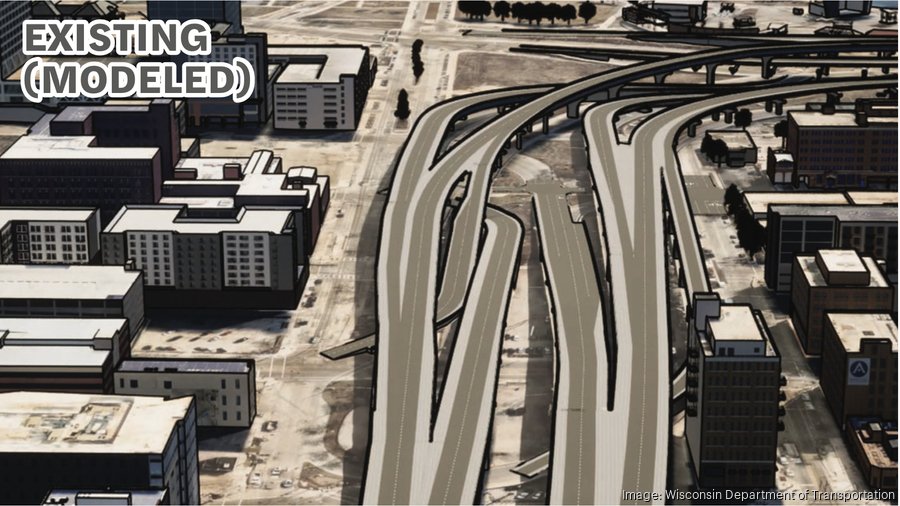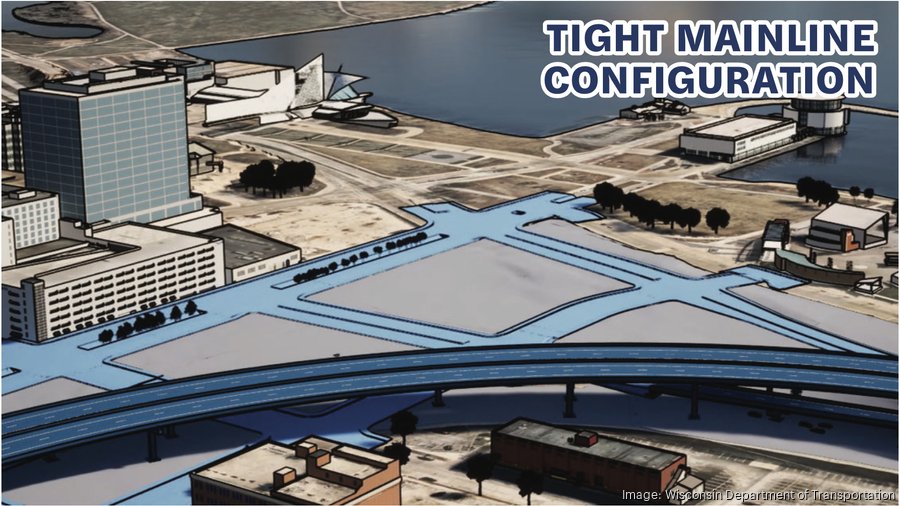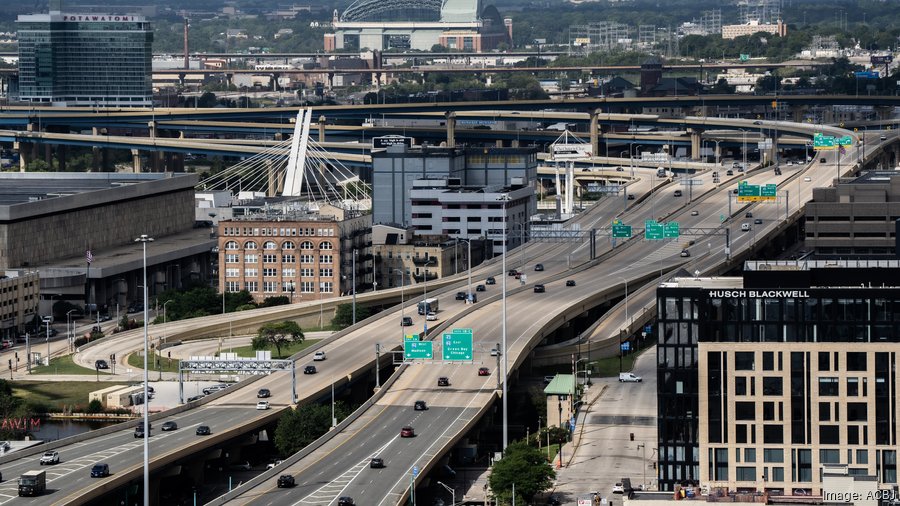Listen to this article 5 min
Between the uncompromising certainty of the “tear it down” crowd and the often snarky incredulity of the smaller status quo group emerged a few voices with a new idea for Interstate 794: Bury it.
However unlikely, doing a Big Dig to turn I-794 from a bridge into a tunnel underneath the surface of downtown Milwaukee is one way to find a middle ground. Two extremes dominated the public comments submitted this summer on I-794’s possible rebuild or removal, according to a review of the comments by the Milwaukee Business Journal.
The Wisconsin Department of Transportation received over 1,700 comments both through an online form and during public comments in early August. Many were stout either in their support for removing the east-west interstate bridges between the Milwaukee River and lakefront and replacing them with a boulevard, or for rebuilding and preserving the structures.
The DOT provided the comments to the Milwaukee Business Journal in response to an open records request.
In terms of sheer numbers, the Tear it Down comments overwhelmed the save I-794 group by about two to one. A third camp emerged asking for a redesign that shrinks I-794 without eliminating its bridges entirely.
But about a dozen residents thought deeper. They suggested removing the concrete bridges dividing downtown and the Third Ward by rebuilding I-794 underground. That is not an option Wisconsin Department of Transportation officials have explored, and would likely be more costly than any of the nine above-ground options that are in the mix.
“Put it underground. Do the big dig like they did in Boston. Would make the city so much more enjoyable,” one online commenter suggested.
“It would be a better solution for the project. It would include green spaces, parks and future development,” a person wrote in a comment submitted during one of the public open houses.
The tunnel contingent only represented about a dozen of the comments submitted online and during meetings.
The DOT’s online comment form gathered about 575 firmly in favor of tearing down I-794 and replacing it with a boulevard. About 235 said it should be preserved without going into great detail, some arguing the structures should be rebuilt with no changes at all. Another 40 online comments supported one of the redesigns that preserve the freeway, but shrink its footprint.







The Wisconsin DOT showed these renderings during its early August open houses to collect feedback on reconstruction options for Interstate 794 in downtown Milwaukee.
The DOT is considering those comments and in early 2024 will release a short list of redesign options for I-794. The state launched the study because several bridges linking I-794 to the Lake Interchange are at the end of their usable life. A proposal to rebuild them as-is prompted an advocacy effort by Rethink 794 and city of Milwaukee officials calling for a study of removing of the freeway entirely.
Those opposing the removal frequently said they live in the communities south of the Hoan Bridge, and rely on the stretch of highway to commute to work or other daily needs. Several had an anti-developer sentiment, arguing the real estate industry is backing I-794’s removal to build more expensive housing in the Third Ward.
Several also expressed concern that taking down I-794 would mean more traffic on I-94 north-south as drivers take that route instead.
“Cudahy and St. Francis are working-class communities with a growing number of young families who have chosen to live here due to affordability and connection to the city via 794,” one comment said.
There was also a strong pushback against the urbanist perspective that favored removing the freeway, with terms like “anti-car radicals from Madison.”
“Urbanists and so-called environmentalists who never even use this stretch of freeway need a reality check,” one online comment said. “Thank you for allowing a hard-working, taxpaying resident of Milwaukee to add a comment about this.”
“I’ve been living in Milwaukee since 1969,” another wrote. “I will do everything in my power to keep this idea from coming to fruition.”
Those supporting removing the ramps fell into many camps. Many supported the idea of converting the freeway land into new green spaces and private development.
“This would open up some of the most valuable real estate in the city for development, generating economic opportunity,” one wrote. “794 serves as a physical and psychological barrier between downtown, the Third Ward and the lakefront.”
There were those with a “people, NOT cars” perspective, as one person phrased it. Many said they rely on their bikes to travel and found a Clybourn Street boulevard preferable to the current system of off ramps and bridges. Many who supported I-794’s removal said that they live in Bay View or the communities south of the Hoan Bridge, and use that stretch of highway for their commutes.
“I’d rather have more options for biking and walking in that area instead of a highway,” one of those commuters wrote. “There are trade-offs, but it would be great to build things like housing and other needed amenities instead of some of those large on- and off-ramps.”

The DOT has also presented six redesign options that would shrink I-794. Those concepts to various degrees would remove on-ramps or change the freeway’s alignment, resulting in more land opening in the downtown area for public space or private redevelopment. Those all include expanding Clybourn Street into a two-way boulevard.
Those seemed to attract the most detailed analysis and response from the public, but also less attention. About 40 of the online comments favored a redesign that would preserve the bridges, but shrink their footprint. During public meetings in early August, the boards regarding the six redesign options received 287 written comments. Of those, 30 specifically said I-794 should be torn down instead.
“I came here thinking I’d want freeway removal,” said one written comment from the public meetings favoring a redesign option. “But after careful review, I’m in favor of tight consolidation. I don’t want trucks driving down Clybourn and Lincoln Memorial and interfering with pedestrians.”
